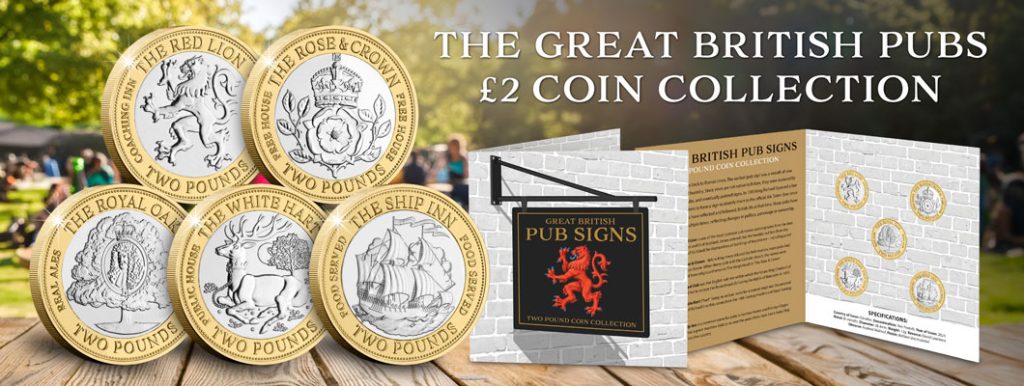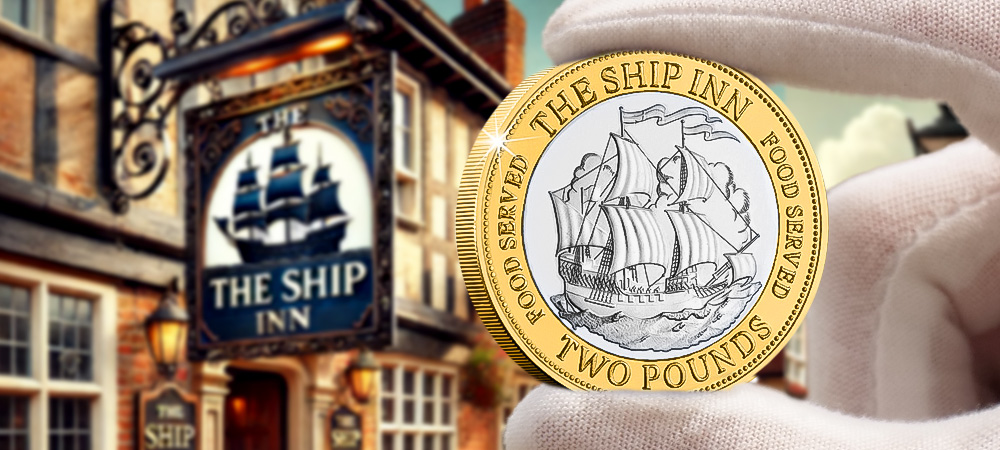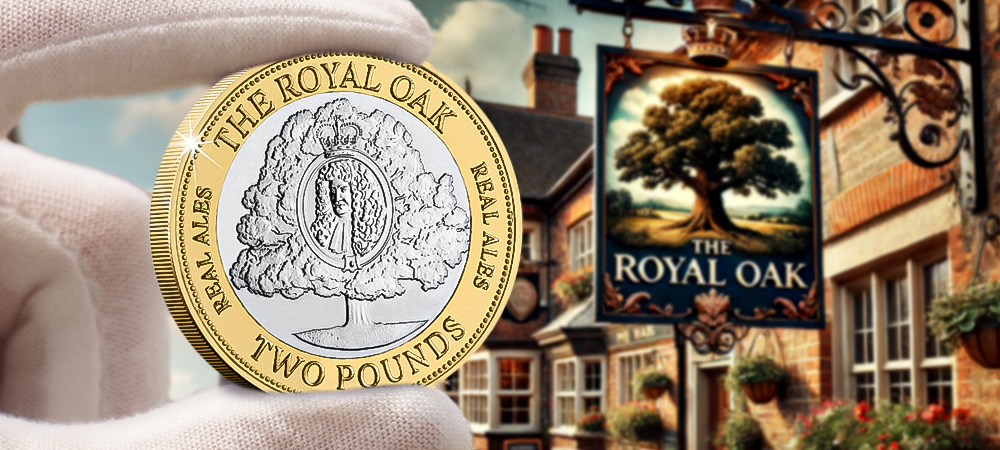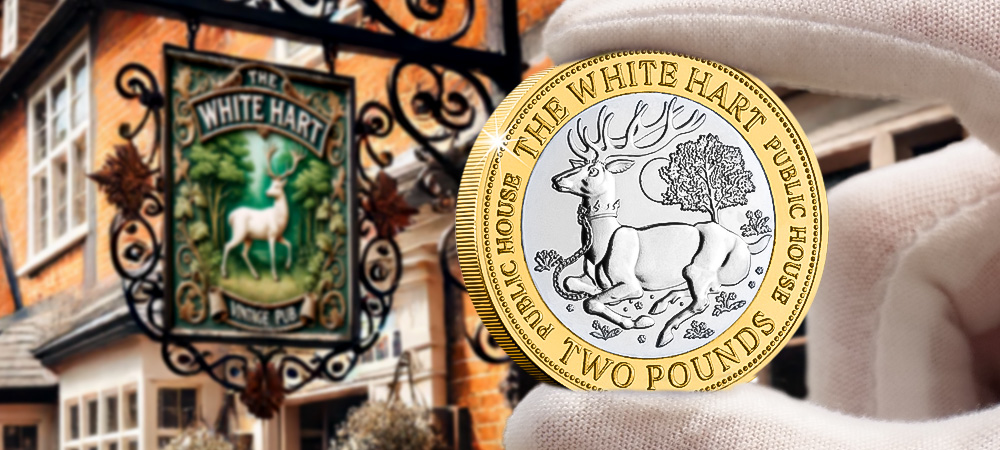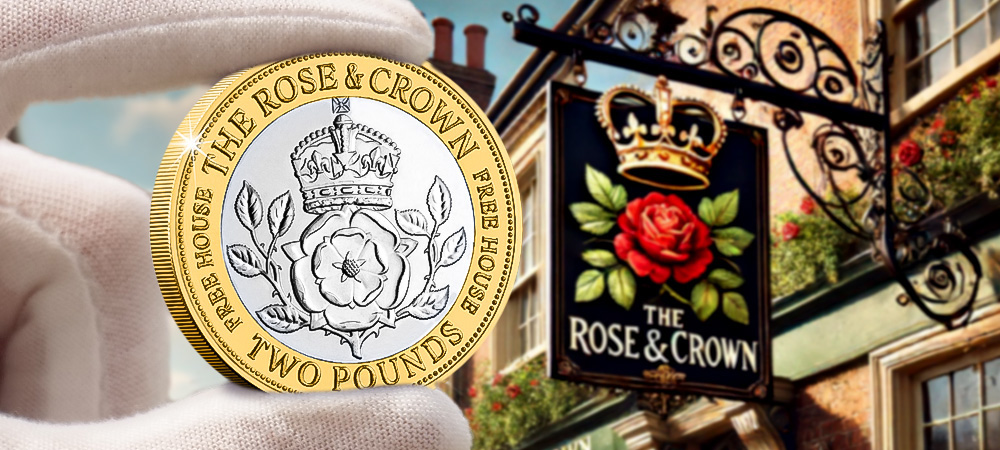Posts Tagged ‘british pubs’
The inspiration behind The Great British Pubs £2 Collection 🍻
“The pub sign says: you are still in England. Come in here and – however far from home you are, however, outlandish our name – you will find the comforts of your local town or village.”
Sebastian Faulks, ‘Icons of England’. Edited by Bill Bryson, 2010
Following the special release of The Great British Pubs Collection, we wanted to delve into the history behind the iconic pub signs featured on the coins themselves.
It turns out the concept of a pub sign has been around for over 1,000 years! Spawning from the Roman custom of hanging vines outside to let thirsty travellers know they would soon have refreshment – combined with the Roman’s arrival in England, and the lack of grape vines to drape across the pub entrance, an evergreen bush was used as an alternative. So, pubs named The Bush or The Holly Bush owe their name to this ancient custom. The very first sign that there was a pub nearby…
The pub sign as we know it today was actually a royal decree. In 1393 King Richard ordered, ‘That whoever shall brew ale in the town, with the purpose of selling it, shall hang out a sign otherwise he shall forfeit his ale.’ As a result, many ale houses began to display signs. But with many still being unable to read it was necessary to use painted pictures so the establishment could be clearly identified.
So, keep reading below to explore the origins of each pub featured on the brand new £2 coin collection.
The Red Lion
The Red Lion is probably one of the most common names for a pub. It originates from the time of James VI of Scotland and I of England, uniting the Scottish and English crowns in 1603.
To emphasise the newfound union between the crowns of Scotland and England, James decreed that the heraldic red lion of Scotland should be displayed on all buildings of importance – which included pubs.
The Ship Inn
As a maritime nation, there is a rich tradition of seafaring and trade that has resulted in many pubs having a name related to ships.
In some cases, the ships depicted on these signs were specific, such as Victory, Vice-Admiral Nelson’s flagship.
The Royal Oak
Another popular pub name is The Royal Oak. Originating after the Battle of Worcester in 1651, fought during the English Civil War.
Charles II’s Royalist Army was defeated during this battle by Cromwell’s Parliamentarians. Charles then had to flee for his life, seeking refuge in the form of a great oak tree near Boscobel House in Shropshire – with hopes that he would not be spotted by Cromwell’s men.
His plan succeeded and having evaded capture, Charles II went on to be restored to the throne. As a result of this dramatic tale of cunning escape, the tree became known as the Royal Oak and pubs across the country were named in tribute.
The White Hart
As mentioned at the beginning of this blog, it was the 1393 decree of Richard II that made pub signs compulsory. The White Hart was Richard’s personal badge and so many pubs chose to adopt the name at the time.
There’s even a Grade II listed sign for The White Hart in Bletchingley, Surrey – dating back to the 18th century. It is shown in the image below.
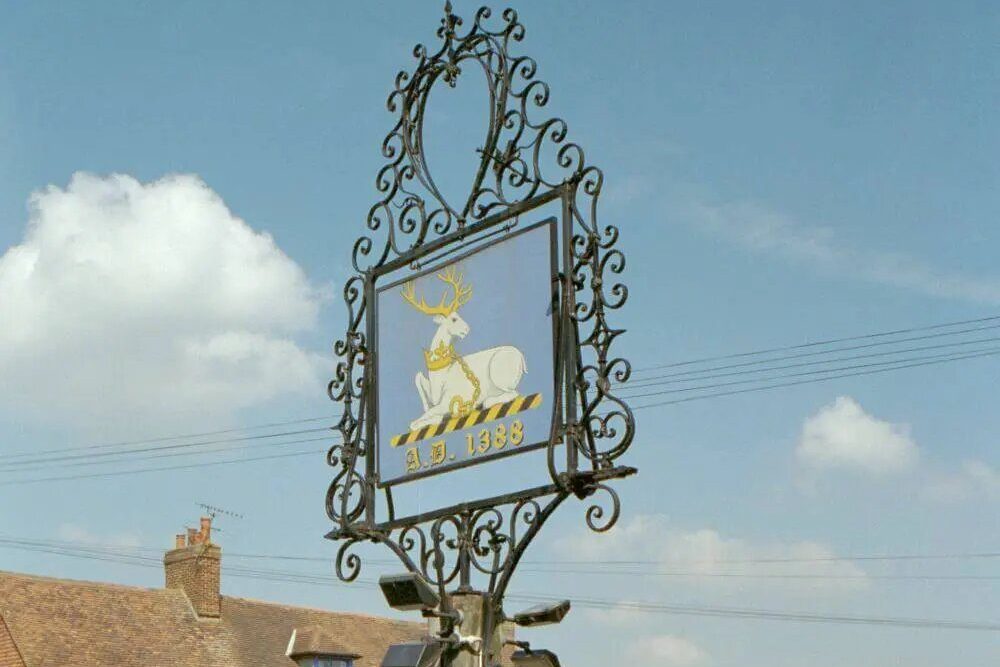
The Rose and Crown
Rooted in a key event of British history, The Rose and Crown celebrates the end of the War of the Roses 1455-1487. A series of civil wars for the throne of England between two competing royal families: the House of York and the House of Lancaster.
The result was the uniting of the red rose of Lancaster and the white rose of York when Henry Tudor married Elizabeth of York. Hence the literal phrasing of the rose and crown together, united.
Where you can get your set today
The Great British pub is at the heart of the community. As you’ve read, this has been the case for generations, so celebrate this integral part of Britain’s culture with The Great British Pubs £2 Coin Collection!
These coins are not just a tribute to the historic artwork above pub entrances, but also a celebration of the stories and memories created within their walls.
Click here to secure yours today >>>
